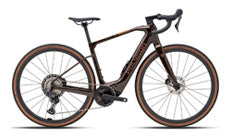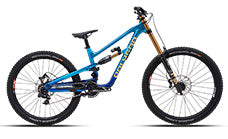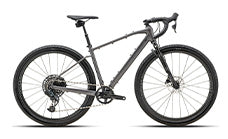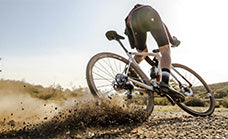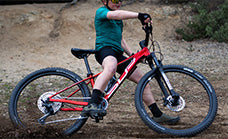Exploring the 'Mullet' Bike Setup: Performance Insights and Technical Adjustments

Welcome to the dynamic world of mountain biking, where constant innovation shapes the ultimate riding experience. Today, we delve into the increasingly popular 'mullet' bike setup—featuring a 29-inch front wheel paired with a 27.5-inch rear wheel. This setup marries the stability and speed of the larger front wheel with the agility and quickness of the smaller rear wheel. But what real-world performance advantages does this setup offer in climbing, descending, and jumping? And what technical tweaks are necessary to optimise this configuration? Strap in as we thoroughly explore the mechanics and advantages of the mullet bike setup.
Mullet Bike Setup
The 'mullet' configuration is taking the mountain biking community by storm, appealing to both amateur riders and seasoned pros with its balanced performance attributes. The concept, which borrows from motocross, combines a 29-inch front wheel's superior roll-over capabilities and stability with the 27.5-inch rear wheel's enhanced manoeuvrability and acceleration. This setup excels in navigating tight turns and handling technical trail sections.
Adopting the mullet setup requires careful consideration of the bike’s geometry, suspension tuning, and individual riding style. This article will outline the necessary technical adjustments, analyse climbing, descending, and jumping performances, and discuss future potential enhancements for this innovative bike setup.
Technical Adjustments for the Mullet Setup
Adapting to a mullet setup involves significant technical changes, not just swapping out wheels. Adjustments to the bike’s geometry, such as bottom bracket height, head tube angle, and seat tube angle, are critical. The initial step is to fit a 29-inch front wheel and appropriate fork onto a frame originally designed for 27.5-inch wheels, which can alter the bike’s handling by changing the geometry.
To mitigate these changes, consider using a shorter travel fork to maintain a more balanced geometry or adjusting the rear suspension to complement the new front end. Such modifications help preserve the bike's handling characteristics and ensure it remains stable and responsive on varied terrains. Also, tweaking the bottom bracket height can improve pedal clearance without compromising the centre of gravity, maintaining stability.
Climbing Performance Analysis The mullet setup shows promise in climbing efficiency by combining a 29-inch front wheel’s leverage with a 27.5-inch rear wheel’s nimbleness. Tests on technical climbs indicate that the larger front wheel navigates rocky sections more smoothly, enhancing traction and reducing pedalling effort. This configuration leads to slight improvements in climbing times and can decrease rider fatigue on longer ascents, providing a competitive edge and increased comfort.
Descending Performance Analysis
Descending with the mullet setup highlights its unique wheel combination, offering stability and agility. The 29-inch front wheel smooths out descents over rough terrain, improving control and rider confidence. Meanwhile, the smaller rear wheel allows for sharper handling in tight corners. While it might not excel in every aspect compared to traditional setups, the mullet bike offers a balanced solution for varied downhill conditions, enhancing overall trail riding capabilities.
Jumping Performance Analysis
In jumping scenarios, the mullet setup's performance is mixed. Some riders prefer the uniformity of a full 27.5-inch bike for aerial control and predictability. The mullet setup, with its larger front wheel, can feel less agile in the air but may offer advantages in larger jumps, providing greater stability upon landing. As with other aspects, personal preference and riding style greatly influence the perceived benefits, underscoring the importance of individual testing.
Wrap Up!
Exploring the Possibilities The mullet bike setup represents a significant evolution in mountain biking, offering a blend of performance features suited for a wide range of riding conditions. Its climbing and descending efficiencies make it a formidable option for those seeking to optimise their ride. While jumping performance might vary, the overall versatility and adaptability of the mullet setup make it an exciting choice for riders looking to push their boundaries and explore new technological advancements in bike design.
As mountain biking technology progresses and rider feedback continues to shape developments, the mullet setup remains a promising platform for future innovations. Riders are encouraged to experiment with and fine-tune their setups, contributing to a broader understanding and optimisation of this intriguing configuration. The journey with the mullet bike setup is just beginning, promising new avenues for performance enhancements and riding enjoyment on the trails.




